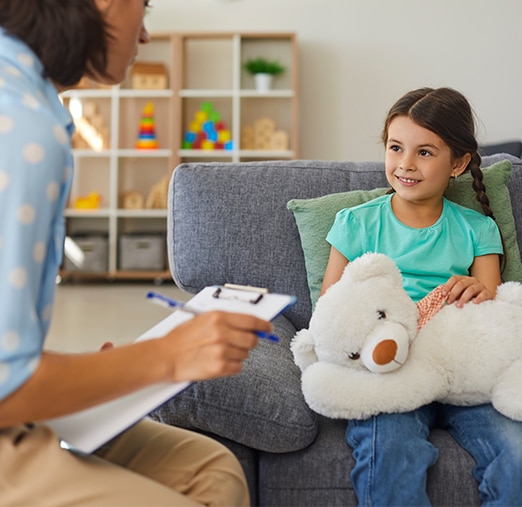Treatment
If your child is diagnosed with hearing loss, we will develop a comprehensive treatment plan to allow your child to thrive developmentally, socially, and academically. The type of hearing loss plays a significant role in a child’s treatment which is why early diagnosis is key to the treatment process. There are three types of hearing loss, conductive, sensorineural, and mixed and each has its own set of treatment options. Deciding on the treatment plan can only be done after the child has undergone a thorough hearing evaluation.
Hearing Aids for Children
Once a child has been diagnosed with a permanent hearing loss, they should be fit with hearing devices as soon as possible, even if they are infants, to maximize their speech and language development skills and academic success. The child’s home and academic environments are considered during the evaluation to ensure that appropriate technology is selected.
Hearing Evaluation Services (HES) realizes that in order for a hearing aid fitting to be successful for a child there needs to be a close, collaborative effort between the family, school, and audiologist. That is why we work closely with the family and the school to ensure that there is a continuum of care and that everyone is working together in the best interest of the child.
Verification
For a hearing aid fitting to be successful, the instrument must be set properly for your child’s hearing loss. HES uses verification equipment called VeriFit, which ensures that the hearing instruments are programmed appropriately with optimal volume and clarity of speech. The VeriFit system provides this information objectively, which is important when working with young children who are unable to provide feedback about how they’re hearing.

Digital Modulation (DM) Hearing Assistive Technology (HAT) Systems
Frequently, children benefit most from hearing aids in conjunction with an HAT system at home and/or at school. HES works closely with your child’s school district to ensure that the selected hearing aid can be used with an HAT system at school.
In the classroom, the teacher speaks into a dedicated microphone and the sound is transmitted directly to the child’s hearing device(s). With the use of the HAT system the child will receive a consistent and improved signal-to-noise ratio of the teacher/speaker’s voice despite the presence of noise, reverberation, or distance in the listening environment. This ensures appropriate access to auditory information in the classroom environment. allowing the child to hear the teacher’s voice over the background noise. This is also useful when the teacher moves around the classroom, writes on the board, or has their back to the class.

